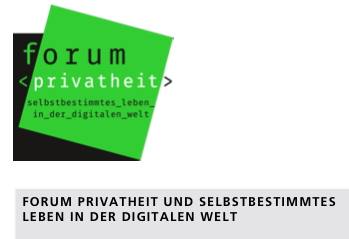Spätestens seit den letzten Malware-Angriffen auf Krankenhäuser in Nordrhein-Westfalen vor einigen Monaten ist klar, dass in Sachen IT-Sicherheit und Patientendatenschutz Nachholbedarf besteht. Häuser, die jetzt ihre Sicherheitskonzepte überarbeiten, tun gut daran, auch ihre Datenzugriffs- und Passwortlogistik zu überdenken. Eine intelligente Single Sign-On (SSO) Lösung mit Passwortmanagement schützt vor einem unbefugten Zugriff auf sensible Patientendaten innerhalb der Klink und senkt das Risiko, Opfer einer Phishing-Attacke zu werden.
Ein Punkt, der in der Debatte um den Schutz sensibler Patientendaten häufig nicht berücksichtigt wird, ist das Verhalten der Klinikmitarbeiter im Alltag. Die hohen Anforderungen an die Passwörter für Kliniksoftware sind in der Theorie ein effektiver Schutz, in der Praxis werden sie aus Zeitgründen jedoch häufig umgangen. Beispielsweise dadurch, dass eine gesamte Station mit einem einzigen Passwort arbeitet oder dadurch, dass Usernamen und Passwörter gut sichtbar in Tastaturnähe platziert werden. Intelligente Single Sign-On Lösungen können diese Sicherheitslücke schließen, indem sie dem Anwender des klinischen Arbeitsplatzes die Passworteingabe durch das Anmelden mittels Token, Mitarbeiterausweis oder Fingerabdruck abnehmen.
Auch das Problem der Zugriffsrechte, die durch die Nutzung eines stationsweiten Passworts verletzt werden, können mittels SSO umgangen werden. Denn durch die eindeutige Identifikation der Mitarbeiter bei der Anmeldung, beispielsweise über einen Token, wird sichergestellt, dass jeder Klinikmitarbeiter nur die Programme und Informationen angezeigt bekommt, für die er die entsprechende Berechtigung hat. Auf diese Weise kann ein Single Sign-On Verfahren auch die Qualität der Versorgung positiv beeinflussen, weil jeder Zugriff eines Mitarbeiters dokumentiert wird und genau nachvollziehbar ist, wer wann welche Änderungen an den Patientendaten vorgenommen hat.
Single Sign-On entlastet Mitarbeiter
Nicht zuletzt sorgt ein SSO-System mit Passwortmanagement für eine zeitliche und gedankliche Entlastung des Klinikpersonals. Bedenkt man, dass sich ein einzelner Mitarbeiter im Durchschnitt rund 70 Mal an einem Arbeitsplatz an- und abmeldet wird schnell klar, welche Zeitersparnis die Identifizierung mittels Token oder Mitarbeiterausweis im Vergleich zu der Eingabe eines 12-stelligen Passworts mit sich bringt.
Aber auch die IT-Abteilungen profitieren von dem Einsatz moderner Single Sign-On und Passwortwortmanagement-Lösungen, weil weniger Helpdesk-Anfragen aufgrund vergessener Passwörter auflaufen und weil die Passwörter nicht alle drei Monate neu vergeben werden müssen. Innovative SSO-Lösungen verfügen über ein Passwortmanagement, das sich mühelos in alle IT-Anwendungen integrieren lässt und vom Benutzer keine Workflowänderung verlangt.
Und noch ein weiterer Vorteil geht mit der SSO-Anmeldung und der automatischen Passwortverwaltung einher: Weiß ein Mitarbeiter sein Passwort nicht, kann er es auch nicht verraten. Und damit ist eine große Sicherheitslücke in Krankenhäusern geschlossen, nämlich die des „Passwortklaus“ durch Phishing-Nachrichten. Als Phishing-Nachrichten bezeichnet man solche E-Mails, die gezielt versendet werden, um Informationen wie Passwörter aus dem Unternehmen „heraus zu angeln“. Der Trick dieser E-Mails besteht darin, dass der adressierte Mitarbeiter gar nicht merkt, dass es sich um eine betrügerische Mail handelt, weil Absender und Anmutung nahezu identisch mit der Mail eines vertrauten Absenders sind – beispielsweise der IT-Abteilung.
Über Phishing-Nachrichten erhalten Betrüger ohne großen technischen Aufwand wertvolle Passwörter, die ihnen Klinikmitarbeiter bereitwillig anvertrauen. Die Investition in ein modernes Single Sign-On System entlastet die Mitarbeiter also auch von der Verantwortung, ohne schlechte Absicht einen Schaden für die Einrichtung zu verursachen. Die Erhöhung des Sicherheitslevels mittels SSO ist technisch betrachtet ein vergleichsweise leicht umzusetzender Schritt, dessen Auswirkungen in der Praxis jedoch immens sind.
Autor und weitere Informationen:
Imprivata
Dr. Frank Lampe
www.imprivata.de
Lesen Sie auch unseren Artikel vom 13.7.2016
Mobile Patientendaten: Grosse Privatheit und Sicherheit notwendig
 Photo: Courtesy Dartmouth College
Photo: Courtesy Dartmouth College
With over two-thirds of U.S. adults owning a smartphone, and the rise in miniaturized sensors and low-power body area networks that are used for remote health monitoring, mobile health (mHealth) is beginning to experience a boom. While the technology has the potential to increase healthcare quality, expand access to services, reduce costs, and improve personal wellness and public health, such benefits may not be fully realized unless greater privacy and security measures are implemented, according to a new paper published in the June issue of Computer.
Lesen Sich auch unseren Artikel vom 28. July 2015:
Smarte Technologien und Internet der Dinge stellen Schutz der Privatheit vor neue Herausforderungen
 Bildquelle: ISI – www.forum-privatheit.de
Bildquelle: ISI – www.forum-privatheit.de
Das Fraunhofer-Institut für System- und Innovationsforschung ISI analysiert Entstehung und Auswirkungen von Innovationen. Das seit Jahrzehnten aktive ISI erforscht die kurz- und langfristigen Entwicklungen von Innovationsprozessen und die gesellschaftlichen Auswirkungen neuer Technologien und Dienstleistungen.
Folgend meldet das ISI und das Forum Privatheit folgende Resulate auf Basis eines Forschungsprogrammes:
DAS VERSTECKTE INTERNET: ZU HAUSE – IM AUTO – AM KÖRPER – IM BETT
Beliebte Alltagsgeräte wie Fernseher sind immer häufiger mit dem Internet verbunden oder verfügen über internetbasierte Zusatzdienste. Die dabei entstehenden Daten über das Nutzerverhalten, ihre Weitergabe und Verarbeitung sowie die zunehmende Komplexität „smarter“ Technologien stellen den Schutz der Privatheit und die informationelle Selbstbestimmung vor neue Herausforderungen.
Logo: Copyright NextGate
Wie weit man schon heute in der digitalen Verknüpfung von persönlichen Gesundheitsdaten aus den verschiedensten Datenbanken schon heute ist, zeigt die Firma NextGate, der Marktführer in den USA.
Das höhrt sich alles bestens an, aber die damit verbundenen technischen und die damit sehr hohen sonstigen Risiken werden verkannt oder unterbewertet.
NextGate helps connect the healthcare ecosystem by accurately identifying and linking patient and provider data from different applications. NextGate’s iDAS (Intelligent Data Aggregation Server) solution framework leverages the company’s industry-leading identity management technology to organize and relate data from enterprise systems to provide a more complete and accurate view of the total healthcare experience.
At the core of this architecture is NextGate’s KLAS Category Leader EMPI technology which currently manages more than 200 million lives. It is deployed by successful healthcare systems and health information exchanges around the globe.
NextGate helps connect the healthcare ecosystem by accurately identifying and linking patient and provider data from different applications. NextGate’s iDAS (Intelligent Data Aggregation Server) solution framework leverages the company’s industry-leading identity management technology to organize and relate data from enterprise systems to provide a more complete and accurate view of the total healthcare experience. NextGate technology is deployed by the nation’s most successful healthcare systems and health information exchanges.
NextGate, the leading healthcare technology company for patient and provider identity management, today announced the addition of a vendor neutral biometrics solution to improve the accuracy of identifying individuals and linking them to their medical records. By adding facial recognition technology to the powerful NextGate MatchMetrix® platform, organizations have additional mechanisms to search for and identify patients, therefore improving the speed and accuracy of matching duplicate records, decreasing fraud and improving patient safety.
Biometrics capture unique physical characteristics of a person. Built on a neural network, NextGate’s facial recognition solution is trained to recognize important compositional features and then convert that information into a score. The score is incorporated into NextGate’s #1 KLAS rated Enterprise Master Patient Index (EMPI) as an additional measure to be weighed and calculated during patient identification, providing an even more precise link between a patient and their medical records.
“Biometrics extend the reach of patient identification, giving organizations more flexibility, accuracy, and confidence when locating, aggregating, and sharing patient records,” says Dan Cidon, Chief Technology Officer, NextGate. “The low cost yet sophisticated technology can be deployed in various environments, from self-service kiosks to the Emergency Room, enabling rapid identification of patients and access to their clinical information across the enterprise.”
Facial recognition was chosen for this biometric solution because of its low cost, vendor neutrality, and ease of adoption for the user. As compared to other biometric solutions that require special equipment or training, NextGate’s approach can use basic digital cameras or scanned photos, such as a driver’s license, and can even process images from an existing database.
NextGate brings advanced patient data management capabilities to market for the accurate exchange of electronic documents between providers and care teams that use disparate systems and varying data sources. The NextGate XDS Registry & Repository stores and provides references to clinical documents from any data source and properly links them to the right patient via NextGate’s Enterprise Master Patient Index (EMPI) patient data matching technology. The accompanying web-based Document Viewer simplifies the retrieval and viewing of various patient document types including care summaries, discharge documents, lab results, advanced directives, and patient consent documents. This User Interface incorporates the Security Assertion Markup Language (SAML), a standard that enforces and authenticates access control based on a user’s access rights to view and retrieve documents.
NextGate has launched this clinical document storage solution at a Regional Health Information Organization (RHIO) that manages over 142 million clinical documents submitted from member organizations. Data sources that feed clinical documents into the XDS Registry & Repository include physician practices and laboratory providers.
Shorthand for Cross-Enterprise Document Sharing, XDS is an Integrating the Healthcare Enterprise (IHE) standards-based interoperability specification for managing the sharing of documents between any healthcare enterprises and provides:
- Document storage accessible to providers and care team users
- Security support and access controls to comply with state-mandated requirements for setting up a secure, technical infrastructure
- Web-based Document Viewer, integrated with an organization’s Electronic Health Records or other core technology, to validate patient consent and access control for single sign-on
- Data governance and process standardization for document storage and exchange
Combining the XDS solution with NextGate’s top KLAS-rated EMPI builds on a foundation of accurately matched and reconciled patient records and enables the storage and use of biometric data for enhanced identification. The NextGate XDS Registry & Repository advances interoperability by sharing and exchanging clinical data including hospital discharge summaries, laboratory and radiology results and physician referral data.
“NextGate continues to push the envelope for quality and efficiency in data management,” says Andy Aroditis, NextGate cofounder and Chief Executive Officer. “With our clinical document exchange product, organizations can control the exchange of clinical information, meaning only certain documents stored within the XDS Registry & Repository can be exchanged based on patient and care giver criteria. This removes a significant administrative burden and potential error-prone process for many healthcare organizations.”
The XDS implementation uses SAML to enable organizations to comply with many security support and access control infrastructure requirements mandated by many states, including the Statewide Health Information Network for New York (SHIN-NY). NextGate XDS Registry & Repository also seamlessly integrates a web-based Document Viewer User Interface to validate patient consent and control single sign-on access.
XDS gives any organization, including physician groups, hospitals, health information exchanges, ACOs and insurance providers a tool to exchange clinical patient data in an IHE standards-based format. This ability expands access to longitudinal record content, broadens collaboration capabilities and augments patient matching accuracy for providers and patient care teams.
With over 20 years of experience as the leader in master patient index solutions, NextGate’s EMPI uses matching algorithms to identify, index, and resolve related patient records spread over different applications and disparate systems. It builds a comprehensive master index of patients and links them together under a Unique Enterprise Identifier. Today, NextGate’s EMPI deployments are managing nearly 200 million lives.
Source: NextGate
For more information, visit NextGate.com.



